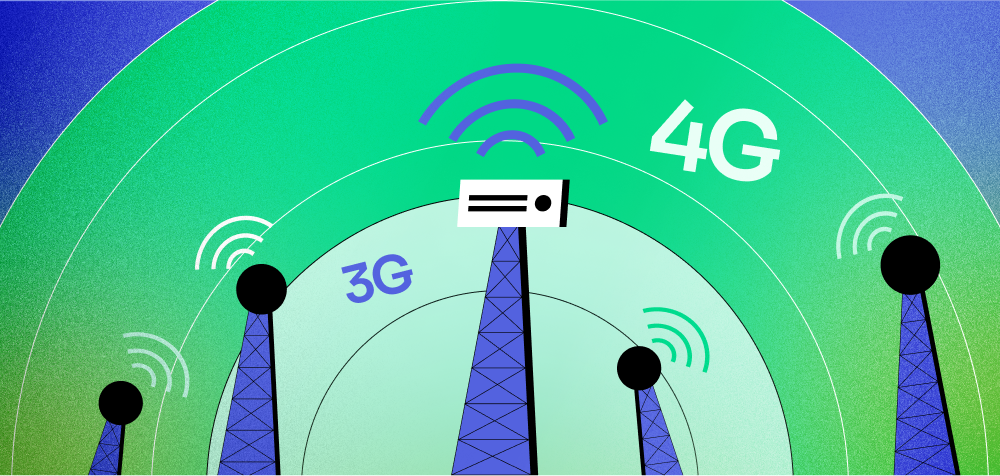Start.io recently co-hosted a webinar with xyzt.ai, the leading location analytics platform. Bart Adams, CTO of xyzt.ai, kicked off the Webinar by explaining what got us here, won’t get us there.
McKinsey and Company’s report confirms what we can already see; the retail industry is changing. Brick-and-mortar stores have been suffering, and the industry hasn’t been able to grow in the last ten years as much as it has done in the past 40 years before.
Add the effects of Covid-19, changes in buying habits, and with Bloomberg reporting that employees won’t be returning to the office full time, the retail industry in our cities as a whole is facing a very bleak future.
But it’s not all doom and gloom. What can the industry do to fight back? Read on to learn how retailers can use alternative data sources such as mobile data and visual analytics technology that is already available in the market to make better strategic business decisions and recover from the effects of the pandemic.
What is Alternative Data, and How Can I Use It?
Whatever you want to call it; alternative, non-traditional or orthogonal, it’s data that yields additional insights that complement the information you receive from traditional sources.
Krishna Nathan, ex-CIO of S&P Global, explains how “alternative data” such as foot traffic can transform a business. It has many uses, from hedge funds and analyzing the flow of commodities around the globe to predicting geopolitical risk and knowing where to open a new retail business in metropolitan centers.
Mobile Data Analytics Challenges
Adams pointed out that working with mobile data and performing analysis on it can be a real challenge, and that’s why we developed the xyzt.ai platform. We see that analysts have real difficulties analyzing data that is both spatial and temporal for the following reasons:
- The data is Big Data.
- The data has multiple properties. It’s multi-signal and not just location; it’s much more.
- The data is Spatio-temporal and cannot be handled very well using traditional geospatial software of business intelligence tools.
Start.io: AI-Driven Mobile Data Platform
Gal Benshlomo, start.io’s Data Science Team Lead, confirmed that mobile data is very Big Data. start.io generates more than 40 billion events a day from over a million mobile applications and 1.5 billion global users.
By combining data from apps, location, Bluetooth connectivity, device make, and model, cell network, device language, Wifi, cell signal strength, demo, and more, users of start.io’s high-quality mobile data allows you to get a complete picture and gain the necessary insights you require.
Privacy is paramount to start.io, and Benshlomo was keen to stress that they are not collecting any direct personal identifiers. start.io has implemented their own consent mechanism platform and digital handshake directly with our users. This provides complete transparency and compliance with all GDPR, CCPA, and COPPA regulations.
Taking a Deep Dive into Mobile Data for Retail
To illustrate the value and use cases for mobile data, Adams focused on different use cases using mobile data.
In the first use case, Adams gets the viewers acquainted with the xyzt.ai platform by defining projects and data sources. More than half a billion records over six months are visualized and show all events of anyone coming to Belgium during the first half of 2020.
By drag and dropping the data, the platform visualizes the data and provides a heat map to easily see the worldwide coverage of the data. A histogram is coupled with the data, and zooming allows you to see trends over time and a more detailed view of the data properties, not just space and time.
In the second use case, Adams performs an analysis on the two main shopping streets in Leuven to show the impact of Covid-19, pre-and-post our first lockdown, and the effects on the retail industry in the city due to the change in people’s behavior.
By creating polygons and specified areas of interest, retail analysts can identify and zoom in on areas of interest. By starting with a larger area map, it is easy to see which areas contain high or low footfall along with many other attributes for a more granular detail of those areas and demographics.
The analysis showed a 71% drop in traffic over the two time periods and a shift in age groups visiting the shopping streets. This type of analysis is beneficial when making strategic decisions about where to open a new store location and analyzing locations in the city.
In the third use case, Adams demonstrates how you can perform trends analysis on your data. By uploading a GeoJSON file of the store locations of popular Belgian footwear retailer Torfs, it’s possible to compare multiple locations over different time periods and build dashboards that analysts can share with other stakeholders.
5 Steps to Skip the Line and Become a Self-Service Retail Analyst
Smart analysts need great tools and accurate data. Read on to learn how to put the two together to make better strategic business decisions.
| 5 Steps to Skip the Line and Become a Self-Service Analyst | |
|
1. It’s obvious, but start using mobile data |
|
| 2. Use an interactive tool |
|
| 3. Start exploring the data visually |
|
| 4. Extract more and smarter insights from mobile data analysis |
|
| 5. Share and collaborate |
|
1. Start Using Mobile Data
You may not realize that this data is available, but it is, and it’s easy to obtain from start.io.
Every mobile phone is a sensor, making mobile data available wherever there are people. Using mobile data, one can analyze any area, any street, in any environment at any time of day.
2. Use High-Quality Mobile Data
The data input quality affects the quality of the data output – for better or for worse.
High-quality mobile data should be:
Standardized:
Gathering information from many different sources, requires standardizing it in a manner that can be easily queried and analyzed when required
Harmonized:
For mobile data to be useful, it needs to be harmonized, meaning that it should pass through the following processes: consolidation, normalization, and enrichment.
Cleansed:
Like any data, there are instances in which there are abnormalities in mobile data. The best analyses start with data that has already been quality controlled, so “dirty data” doesn’t slow down or compromise insights.
Rich:
Data with multiple attributes is key for meaningful analysis. Mobile data is extremely rich, meaning analysts can work with more than just age or sex.
Compliant:
It is vital to use mobile data that is compliant with local regulations. In most cases, aggregate mobile data must be properly anonymized.
3. Explore Mobile Data Visually
Before building models, machine learning algorithms, or statistical analyses, the best data analysts explore data visually. When it comes to mobile data, starting an analysis with a heatmap offers many more insights than a spreadsheet.
There are many benefits to analyze mobile data visually:
Big Data Digestibility:
Mobile data has billions of data points and many different attributes. Visualizations make it easy to see patterns and know where to focus.
Spatial-Temporal Analysis:
Mobile data is 4D so that that visualization can show you patterns over time. In the below world map, data is presented spatially and on a timeline and can be filtered based on the data’s attributes.
Attribute Filters:
An analyst can also filter the mobile data by demographic attributes, such as main country, age, sex, and ability to pay, and more. This gives an analyst a deep understanding and insight into the data and what’s happening at ground level.
Specified Areas of Interest:
A visual representation allows retail analysts to identify and zoom in on areas of interest. By starting with a map of a larger area, it is easy to see which areas contain high or low footfall and many other attributes to zoom in for a more granular detail of those areas and demographics
Context:
Visual representations can give context to data analysis for faster insights. Seeing mobile data on a map, side-by-side, allows an analyst to quickly see an area with high footfall or a locale with a high concentration of residents in certain age groups in downtown neighborhoods.
4. Extract More and Smarter Insights From Mobile Data
Using mobile data helps extract deep insights, and visualization tools allow for quicker, more nuanced, and contextualized analysis.
Here are a few tips that retail analysts can use to make smarter insights:
See the larger context: Mobile data is unique in that you can use it to see real-time insights and behavior patterns. The visualization below shows a global view of mobile users that visited Belgium in the first half of 2020. This kind of macro view allows retailers a broader context and easy comparative analysis.
Zoom In: Zoom in on points of interest to gain specialized insights. xyzt.ai’s self-service visual analytics platform allows you to zoom in and select specific areas to focus on.
Compare: Compare an area with itself over time to deliver meaningful analysis or compare global trends with other locations. Make comparisons of multiple areas to analyze footfall traffic, location specifics, demographics, and more.
Use multiple attributes: Mobile data is rich with different attributes like age, sex, ability to pay, and more. Visualization allows you to filter layers of data for a holistic understanding.
5. Share and Collaborate
A self-service analyst knows that they don’t hold all the answers and is keen to collaborate with managers, peers, and stakeholders. Further analysis and feedback are valuable for complex mobile data analysis, and the right data visualization tool will make sharing dashboards and analyses easy.
Get Started Today!
NEW! We’ve launched a new consumer insights and audiences section on our website: https://www.start.io/audience/
Or contact us at info@start.io to get more details on how you can use mobile data.



